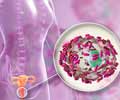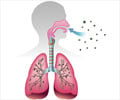Researchers have found that an emerging form of the pathogenic yeast Candida can complete a full sexual cycle in a test tube, even though it is missing the genes for reproduction.
Researchers at the Duke University Medical Center have found that an emerging form of the pathogenic yeast Candida can complete a full sexual cycle in a test tube, even though it is missing the genes for reproduction.
The researchers say that the yeast may also do so while infecting people."Sex contributes to the Candida yeast species' evolutionary success. I think the fact that it has a complete sex cycle is likely to play a role in the evolution of drug resistance in this emerging pathogenic yeast species," said Dr. Joseph Heitman, director of the Center for Microbial Pathogenesis in the Duke Department of Molecular Genetics and Microbiology.
Yeast infections are notoriously hard to treat. Humans are susceptible to three types of yeast infection: in the mouth and throat, vaginal infection, and a sometimes fatal systemic infection of bloodstream and organs, such as the kidney.
Heitman's team have identified eight Candida species that have a sexual cycle, but lack many of the genes related to reproduction found in other species.
"The unrecognized sex cycle could mean we need to develop new treatments to combat what is really happening in humans infected by yeast," said co-author Dr. Jennifer Reedy.
The researchers then conducted another study to determine how could the yeast sexually produce spores when they lack so many genes responsible for meiosis, the process of sexual cell division that reduces chromosomes to half their number in the progeny.
They examined and defined the structure and functions of the mating-type genes in yeast, which helped them learn that forms of Candida yeast undergo meiosis but generate offspring of several types.
About two-thirds have the classic 50:50 division of chromosomes from the split parent cell, but a third of them have an extra chromosome or even double copies of all chromosomes.
"What we found is that the sexual cycle has a new way to create genetic diversity, and it provides a unique vantage point from which we can explore the mechanisms of sexual reproduction. This provides a new way to study sexual reproduction and how chromosomal abnormalities arise," Reedy said.
Heitman said that Candida's meiosis without meiotic genes might be what gives rise to the progeny with unusual numbers of chromosomes.
"Or maybe the genes were lost for a reason, to provide a route to genetic diversity. Or maybe these differing types of progeny are the unfortunate consequence of undergoing meiosis without the machinery that species normally have when they reproduce sexually," Heitman said.
The researchers point out that humans, too, have their share of oddly paired chromosomes.
"Experts estimate that about 10 to 30 percent of human eggs or fusion products may be aneuploid, with chromosomes from mother and father not paired exactly one to one, but the great majority of those fusions of sperm and egg don't make it to the implantation and pregnancy stage.
That's why it is important to find models like this, so that we may shed light on related human conditions," Reedy said.
The findings have been reported in two research papers, published in Nature and Current Biology.
Source-ANI
SRM














